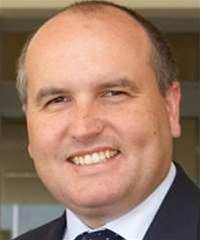A NSW MP has launched a scathing attack on Telstra in the state's parliament today, accusing the telco of “corporate bullying”.

MP for Baulkham Hills David Elliott described Telstra’s plans to build a mobile transmission tower on top of the Castle Hill RSL as “repugnant”.
He accused the company of using its powers under the Telecommunications Act, which gives carriers immunity to normal planning laws when building transmission infrastructure, to “force an aerial onto the club and the community”.
“If Telstra continues to treat locals with disregard it shouldn’t be surprised when people like me take action until their brand is damaged,” he said.
Elliott, who is also on the board of directors at the RSL (which opposes the tower), is due to meet with Telstra on Wednesday to discuss the plan.
The site of the proposed communications tower is just 120 metres from the local Castle Hill High School, even though the Department of Education and Communities states “a preference” for any telecommunications infrastructure to be built at a distance of at least 500 metres from the boundary of a school property.
Fears that electromagnetic emissions will impact on the health of students has stirred opposition from the MP and some members of his electorate.
“It is totally inappropriate to have telco towers across the road from schools. Parents don’t expect their children to be exposed to this level of risk,” Elliott told the legislative assembly.
The threat posed by the levels of exposure generated by low-impact mobile towers has never been clinically confirmed.
The nation’s peak chief telco regulator, the Australian Communications and Media Authority (ACMA), says “the weight of national and international expert opinion is that there is no substantiated evidence that there are adverse health effects resulting from the emissions of mobile phone towers or base stations”.
“When transmitting, these antennas typically emit a fan-shaped beam, roughly parallel to the ground. Because of the narrow vertical spread of the beam, the radiofrequency field intensity on the ground directly below the antennas is low,” ACMA's guidance on the issue states.
A spokesperson for Telstra told iTnews the level of radiation generated by the proposed tower would be “less than 1/400th of the amount that is allowed to be emitted”.
The spokesperson said the company was trying to reconcile community health concerns with “exponentially” increasing demand for mobile services in the area.
Telstra has already weighed up its options with two alternative sites for the tower, but both would require free-standing towers to be constructed.
“We believe the proposed site, where we can house all the antennas on the roof of the RSL, is the least visually obtrusive,” the spokesperson.
Community consultation is ongoing.

.png&h=140&w=231&c=1&s=0)








.png&w=120&c=1&s=0) Tech in Gov 2025
Tech in Gov 2025
 Forrester's Technology & Innovation Summit APAC 2025
Forrester's Technology & Innovation Summit APAC 2025
.png&w=120&c=1&s=0) Security Exhibition & Conference 2025
Security Exhibition & Conference 2025
 Integrate Expo 2025
Integrate Expo 2025
 Digital As Usual Cybersecurity Roadshow: Brisbane edition
Digital As Usual Cybersecurity Roadshow: Brisbane edition











.jpg&h=140&w=231&c=1&s=0)



